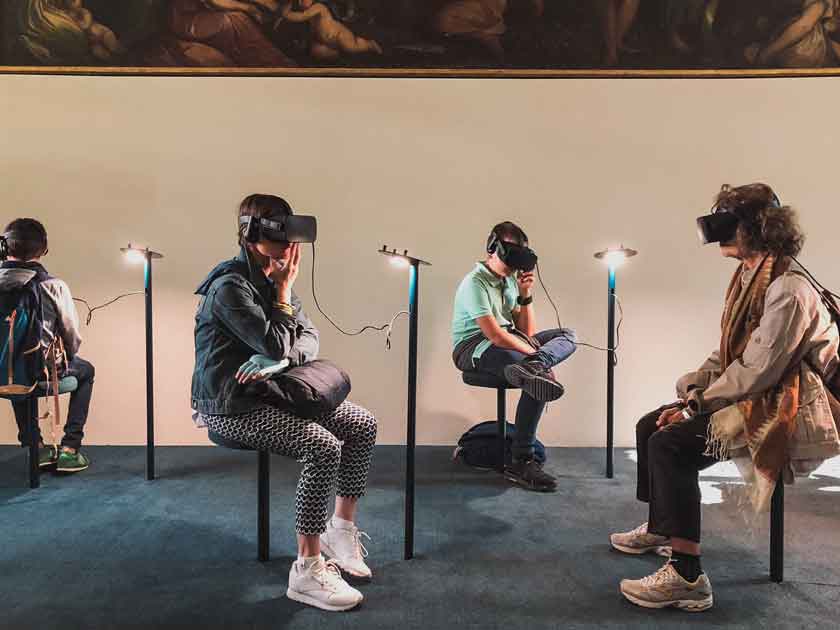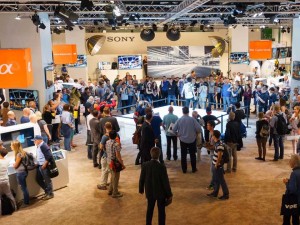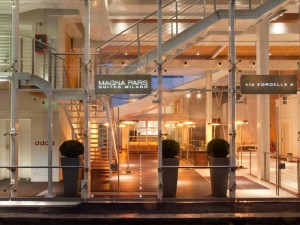
How futuristic technology can transform corporate events
Advances in technology seem to have rocketed into hyperdrive in recent years, offering individuals and businesses previously unimaginable capabilities.
As such innovations become more accessible, affordable and a part of people’s everyday lives, so their scope to transform events is being embraced by the sector.
Much of this technology revolves around creating a more immersive experience for attendees and personalising communication, while improving event management and security.
Here we look at some of the most exciting technological trends and how they can be harnessed to wow event attendees, boost business and make the lives of event organisers easier.
Virtual reality (VR)
Using virtual reality allows you to immerse your visitors in a computer-generated 3D world, creating an engaging environment which stimulates the senses and makes for a truly memorable experience.
VR can be applied to conjure up interactive displays and on-site experiences as well as helping to bring presentations to life, thereby making their messages more persuasive and powerful.
It can also be used to simulate scenarios for training demonstrations, for experiential marketing to showcase products, provide 360 degree interactive tours and offer some light relief with video games and entertainment shows.
Augmented reality (AR)
Augmented reality ensures your guests remain rooted in your event but can engage with a reality enhanced by computer-generated elements.
It can be harnessed as part of exhibitor demonstrations, brand promotion, interactive games and competition challenges.
Thanks to the popularity of phone app features like the Snapchat filters and mobile games such as Pokemon Go, AR is edging towards the mainstream. Featuring this capability on your mobile event app will make your event’s AR attractions even more accessible.
Artificial intelligence (AI)
The once futuristic concept of artificial intelligence is fast evolving, opening up an awe-inspiring range of opportunities across all areas of our lives.
As more people become familiar with the benefits of using AI voice assistants and social media chatbots, it makes sense to incorporate a tailored chatbot in your event app – enabling attendees to explore the venue more easily, ask questions about the programme of activities, register for sessions and pick up networking recommendations.
AI robots could also be employed to boost engagement by welcoming and registering visitors, giving them directions to particular demonstrations or presentations and gathering their feedback.
Event apps
Mobile event apps are becoming increasingly commonplace, helping attendees to navigate their way around and make the most of their visit.
People can download an app, which has been customised for your event, to their mobile devices so they have instant access to a wealth of information such as the day’s schedule, venue map, exhibitor list and speaker profiles.
Integrated with AI capabilities, your app could also answer people’s queries while gathering useful data about common questions, potential problems and their solutions.
Facial recognition
Although facial recognition has started to make more inroads at large public events such as concerts, festivals and sports events, it is still a tool with applications in the corporate arena.
Instant facial recognition of attendees offers the scope to speed up check-in immeasurably, making the process smooth, efficient and pain-free – preventing a bad first impression of long queues, while saving money in terms of time and staff.
This kind of technology also helps improve security by allowing unobtrusive ID checks, as well as collecting data for crowd mapping and session tracking – scanning faces to assess the number and demographic of people at an event, as well as establishing the level of participation in different activities.
Wearable technology
Wearable technology, such as RFID (radio frequency identification), has begun to make an appearance at large public events like music festivals and international conferences – enhancing security as well as participants’ enjoyment.
Examples include RFID wristbands to manage access and enable cashless payments around the event venue, similar to contactless card transactions.
The tagging and tracking capabilities of an RFID system can also provide analytic information relating to flow of attendee traffic around an event, helping organisers to better plan future show layout.
Drones
Love them or hate them, drones – or UAVs (unmanned aerial vehicles) – are here to stay. They can add an extra dimension to outdoor events with spectacular air displays but can also come in handy for site security and surveillance.
These flying cameras are capable of capturing breath-taking panoramic views to give a unique perspective on large events, providing fantastic images for marketing purposes, as well as helping event organisers to monitor crowds and manage traffic flow.
Their applications are only just starting to be fully explored but, in the meantime, users need to keep up-to-date with the latest legislation around restrictions on their use and misuse.




